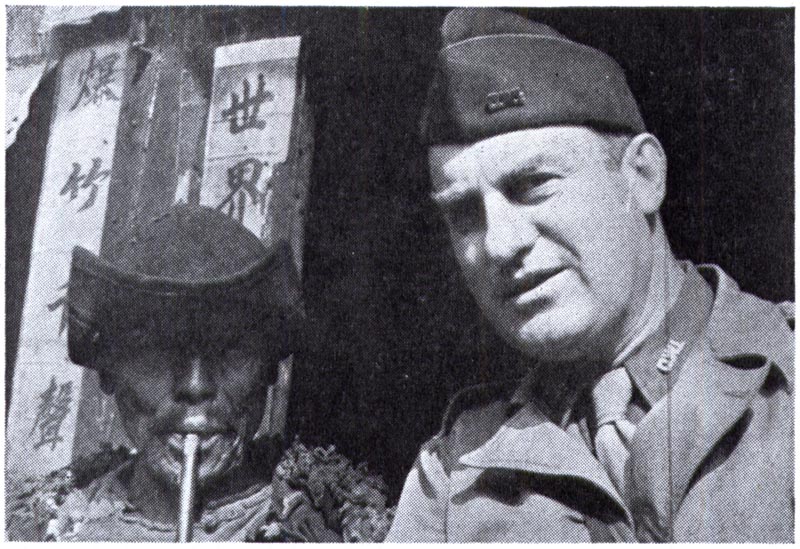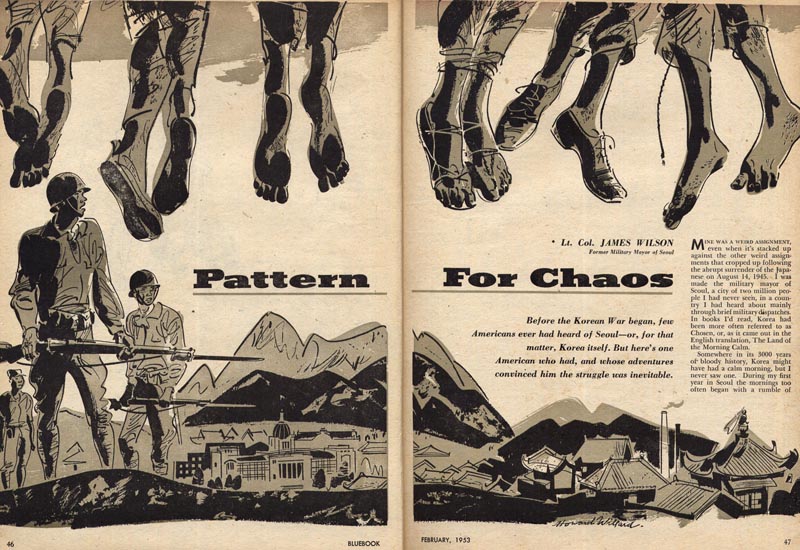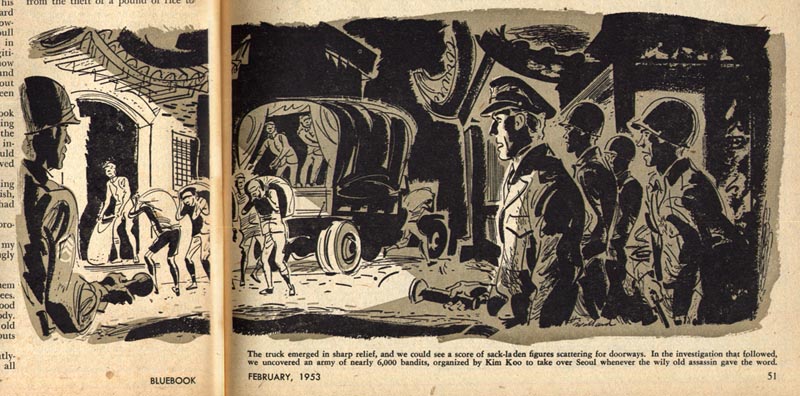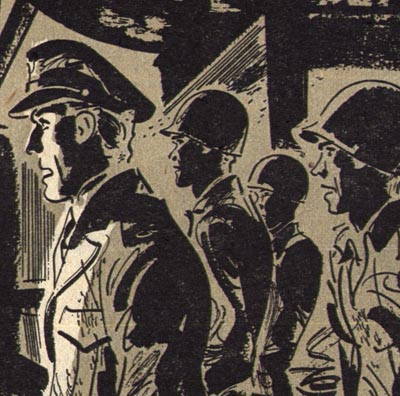He had always wanted to go to China, a land he had long studied in books and pictures. Enlisting in the army gave him his chance.

Willard served with the Office of War Information, China Theatre. He used the opportunity to explore "the color, the shapes, the character and the rhythms of the land" and its people. Here, the style that would be considered so 'contemporary American' a decade later by his art director clients first began to take shape. Willard was profoundly influenced by Chinese writing and brush drawing.*

Below, two pages from one of the ever-present sketchbooks Howard Willard carried with him in China. If the accompanying type is too small to read, click the image for a larger version - the anecdote described is both fascinating and amusing.

Willard designed and drew propoganda pamphlets for the 'Psychological Warfare Dept.' of the Office of War Information. How odd - yet somehow appropriate - to think that the child who once scratched simple figures into unbaked bricks back in Indiana would grow up to create similarly iconic artwork in the service of the Allied war effort.

Because Willard had embraced both Chinese language and culture, he was an invaluable asset to the OWI. His propaganda pamphlets were particularly potent because his immersion in the culture had given him an excellent understanding of Chinese psychology and colour symbolism. The tiny, beautifully designed artworks, which were dropped by the thousands from airplanes, became known as 'Willard's Confetti'.
No doubt he drew upon personal experience when, years later, he was assigned to create scenes of war for publications like the men's adventure magazine, Bluebook.

When I first saw these 1953 drawings, I was struck by their similarity to the ground-breaking work Harvey Kurtzman was doing during this same period for E.C. Comic's Two-Fisted Tales.

Could Howard Willard have been an influence on Kurtzman? Certainly the blood and guts war stories typically found in 'men's sweat' magazines like Bluebook would not have been out of place in the comics editor's office. Perhaps Kurtzman saw Willard's work and decided to incorporate some of its elements in his own?

As well, Willard's illustrations here, subtley different from much of his other art (that I've seen) show some of the same chiaroscuro qualities found in Noel Sickles' work.

Sickles was so proficient at delineating this type of material - and so widely admired for it - that it wouldn't surpise if Willard had drawn some inspiration from Sickles.
* Scroll down to Monday's post introducing this week's topic and you'll see a Chinese character stamp, called a 'Chop'. Chops were used all over China to sign letters, contracts and other documents, and almost everyone had his own unique Chop. Willard explained that his Chop, designed and executed by a master Chinese chopmaker, represents a very rough translation of his name. Since there are no Chinese sounds even approximating "will" or "lard", the chopmaker did the best he could by combining 'Way' and 'Lai' - two old Chinese names - then added the word 'du', the closest sound he could get to the final "d". 'Du' - which means "virtue" - is represented by an ideograph of the mouth between the heart and heaven or, literally, "speaking over the heart to heaven".
This comment has been removed by the author.
ReplyDeleteHey, Leif! Was there a single illustrator who WASN'T in China during World War II?
ReplyDeleteBetween William A. Smith, Willard, Martha Sawyers, etc. it's amazing there was anyone left to draw pictures in the western hemisphere!
haha... based on what I've seen of magazines during the war years, David (admittedly not THAT much), there really weren't very many illustrators left in the western hemisphere --- except Albert Dorne, who was handily able to draw just about all advertising and editorial art required by America's print media! ;^)
ReplyDeleteWow, fantastic. Great posts on Mr. Willard, great art. There's an interesting dichotomy between the buoyant, optimistic, happy rendering technique and the grim subject matter in his war illustrations.
ReplyDeleteWouldn't it be fascinating to actually page through some of his travel or war sketchbooks from that time? A sketchbook movement (subculture?) has evolved over the last few years partly due to the enthusiastic influence of people like Danny Gregory, coupled with the ease of posting sketches on blogs; I can't help but wonder how great it would be to actually see a sketchbook from a master like Howard Willard. I know there would be a market for it if someone could publish it.
Thanks Anthony - I'm with you... it would be amazing to see Howard Willard's sketchbooks. I wonder if some family member will find these posts and give us the good news that they have been passed along through the generations. Wouldn't that be great? We can only hope.
ReplyDeleteLET'S HOPE SO!
ReplyDelete...on the search for another sunken treasure chest.
As I love Chinese Painting, I'm so grateful Leif, to find those last two featured artists.
Excellent post!
ReplyDelete